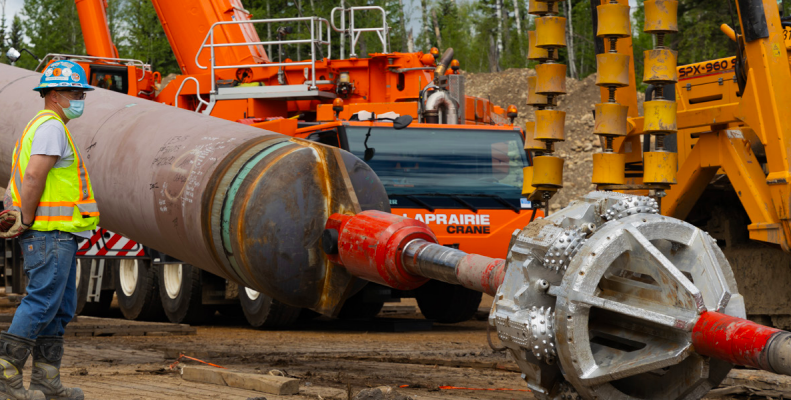Murray River HDD sets TC Energy record
Publicerad: 28 oktober, 2021

The recent completion of the Murray River Horizontal Directional Drill (HDD) marks a huge milestone for Coastal Gaslink in North America, the largest trenchless water crossing on the project has been completed with zero safety incidents.
This 1.3 km section of pipe weighs over 1.2 million pounds (544 t), and the 48 in (1,200 mm) diameter HDD installation signifies the largest of its kind for TC Energy and one of the longest in North America. Before work could even begin on site, years of planning went into making sure everything went smoothly in coordination with TC’s prime contractor Surerus Murphy Joint Venture (SMJV).
An HDD pull is a process that involves the expertise of many including engineers, crossing companies, environmental specialists and surveyors. Several tests need to be done beforehand to make sure the entire process is safe, and this particular pull had an added level of difficulty for the crew to manoeuvre due to the steep slope of the river.
It takes a large amount of coordination throughout the pull once the process starts. As the tunnel is drilled under the water crossing, the pipe is being held by cranes on land, some segments suspended 9 m in the air in order to ensure the proper 14o angle at the entry point.
“Some of the cranes here have one hundred thousand pounds on them, we are dealing with a lot of weight, we have to react in realtime.” explained Dave, an HDD support foreman on the Murray River project. The pipe is then carefully passed through the cranes on land and into the drilled tunnel under the Murray River. No matter the difficulty, safety comes first, and the Murray River HDD was successfully completed with zero safety incidents.
“We are committed to achieving the highest standards of environmental protection during construction, and for the life of the project. We recognise that how we navigate water crossings matters to the local communities, which is why we utilise advanced engineering methods to safely construct around and across all water bodies. Reclamation is a priority and readings are taken before the pipe is installed so that we can test both during and after construction to monitor that the pipeline continues to operate safely and efficiently without affecting the environment and the communities around us. For example, our teams look out for changes in sediment, dissolved oxygen levels and suspended solids in the water. We work in beautiful areas of nature with so many different species, including ‘areas that have commercial, recreational and Indigenous species of importance within the river system’.” said Jeff, lead environmental inspector for the Murray River HDD.
Across the entire project route, all parties strived to leave the land the way it was found. Jeff continued: “Projects like this show the planning and coordination of pipeline construction and the commitments and legislation we follow and how we do this work in a sustainable way.” Pulling the pipe through a tunnel under the river meant no impact was made to the body of water, minimising the footprint and reducing the environmental impact.